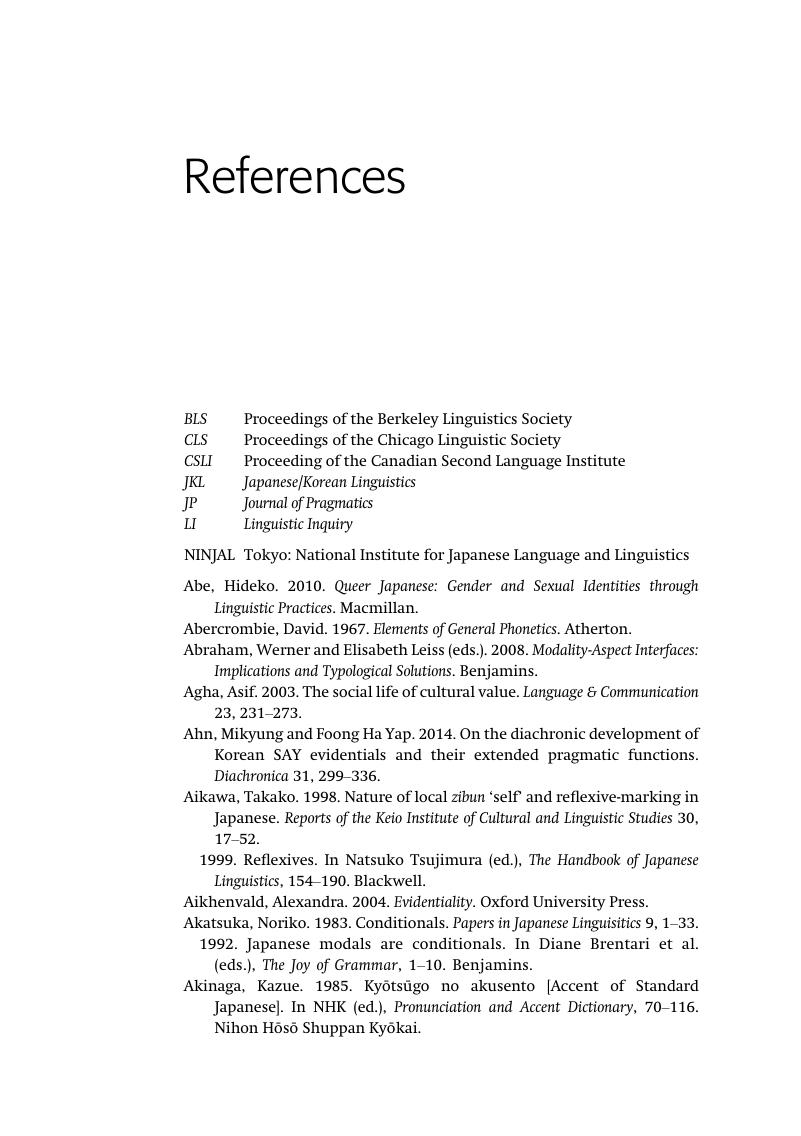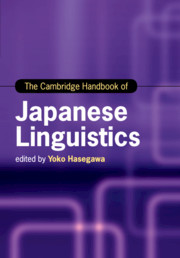Book contents
- The Cambridge Handbook of Japanese Linguistics
- Cambridge Handbooks In Language And Linguistics
- The Cambridge Handbook of Japanese Linguistics
- Copyright page
- Contents
- Figures
- Maps
- Tables
- Contributors
- Abbreviations
- Part I Overview
- Part II Sound System and Lexicon
- Part III Grammatical Foundation
- Part IV Grammatical Constructions
- Part V Pragmatics/Sociolinguistics
- References
- Index
- References
References
Published online by Cambridge University Press: 03 May 2018
- The Cambridge Handbook of Japanese Linguistics
- Cambridge Handbooks In Language And Linguistics
- The Cambridge Handbook of Japanese Linguistics
- Copyright page
- Contents
- Figures
- Maps
- Tables
- Contributors
- Abbreviations
- Part I Overview
- Part II Sound System and Lexicon
- Part III Grammatical Foundation
- Part IV Grammatical Constructions
- Part V Pragmatics/Sociolinguistics
- References
- Index
- References
Summary

- Type
- Chapter
- Information
- The Cambridge Handbook of Japanese Linguistics , pp. 698 - 754Publisher: Cambridge University PressPrint publication year: 2018



